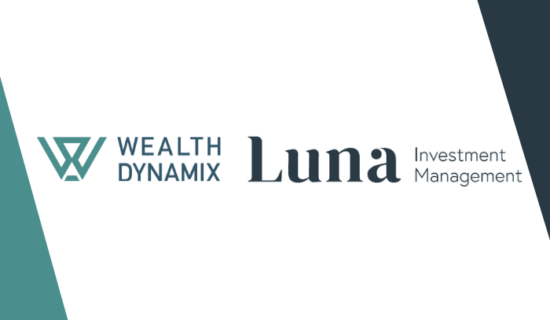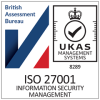The ability to make sense of data then apply and prioritise its place in a client discussion is a key enabler when it comes to client engagement.
Things have been heating up in Asia recently. The wealth management market has always been highly competitive and equally fragmented, with a dearth of domestic and international players vying to stake their claim on the vast wealth in the region. But the rise of BigTechs with the appetite to disrupt and the advances to appeal to an increasingly tech-savvy high-net-worth demographic has changed the tempo in this already fast-moving market.
Established brands have long been investing in their digital capabilities to appeal to the highly multi-banked Asian wealth landscape, and this rocketed as consumers across the board were forced to migrate online at the hand of the pandemic. But these market players need to move quickly: wealth growth in the region lagged behind other developed countries last year for the first time since 2012 at 8% versus a global average of 9% according to the Capgemini World Wealth Report, 2020. It’s therefore been no surprise to see the Asian government extending foreign licences to challenger banks with the payment capabilities to set the pace.
And this is set to continue. When we spoke to relationship managers in the region for our report ‘Empowering the wealth manager’, no less than 90% said they expected the wealth management and private banking marketplace to become more competitive over the course of the next decade.
And while a third (28%) were bracing themselves for intensified competition, only 30% feel market players are well poised to maximise the opportunity in the region, while over half (55%) think there’s room for improvement.
Market dilemma
Wealth managers have a raft of worries keeping them awake at night. Regulatory compliance is a global issue, but more financial institutions were fined in APAC in 2020 than anywhere else in the world. The pandemic has challenged us all, but ours is a region with an ageing population, which has shaped the way in which we engage with service providers. Many elderly HNWIs consequently expect a high-touch delivery of service, which in the enforced age of video conferencing, is harder than ever to deliver. At the other end of the spectrum, the growing pool of wealth generated by digital-savvy millennials cannot be ignored. This divergence has left many firms scratching their heads over how they can keep existing clients happy, but stake their claim on the untapped opportunity around them.
“While technology has given rise to a tapestry of data, lack of cohesion has left many already overloaded advisory teams grappling to make sense of the insights at their fingertips.”
Testing times
For many firms, the biggest barrier is time. Some 48% of a relationship manager’s day is spent engaging with clients – and as the markets move erratically around us, this is often more. Just 5% of relationship managers’ time is spent training or honing their skills – compared with the 25% they agree is the right L&D investment to deliver an optimal client service. Compliance, internal meetings and prospecting assume nearly half of relationship managers’ resource – the result of which is that a staggering 84% consider their client management approach to be reactive, and just 10% as proactive.
Up close and personal
The situation is frustrating for professionals invested in an industry that’s been built on relationships. But time is not the only factor: when we asked our community how they could improve their client relationships, the overwhelming majority (44%) said a greater understanding was all it would take to enhance their rapport and proposition in the process.
Counterproductive investment
Many of the firms we speak to have invested heavily in the advances they think they need to get closer to their clients and target them appropriately. But we have seen all too often front office investment that doesn’t flow behind the scenes, leaving the relationship manager paying the price for poor onboarding processes and clunky administration. And while technology has given rise to a tapestry of data, lack of cohesion has left many already overloaded advisory teams grappling to make sense of the insights at their fingertips.
Missed opportunity
There’s a much greater issue at play here, however. Human nature is to go with what we know, and in the transaction-heavy Asian wealth management market, many relationship managers are concentrating their efforts on their most engaged clients. It’s an old adage that businesses reap 80% of their profits from 20% of their client base, but in an industry that is more crowded than ever, could adjusting your focus give your business the edge it needs
“In our recent industry study, 59% of relationship managers in Asia deem their client relationship as average.”
Making time count
Many wealth managers we speak to report a daily battle with insights: they know that the intelligence that comes with digitalising their systems and their processes could hold the key to learning more about their clients, their needs and the opportunity that exists to help them.
However, without the right systems to sift through these insights, keying and then deciphering data simply adds to an already testing workload. Then there’s the task of translating insights into action: trying to make sense of data is one thing, but applying and prioritising its place in a client discussion is another – particularly as time spans, client needs evolve, and regulation abates.
But taking the time to step back and assess your approach could well be game changing for your business. With legacy systems and fast-changing client demands, many advisory firms fall into the trap of taking a piecemeal approach not only to the delivery of their proposition, but the systems and processes that underpin this. By working holistically across the breadth of your organisation, you can lift up the hood and look under the bonnet at your full client staple and then work out exactly what it is that they need. And while retaining the client is a given in the multi-banked wealth market, getting closer to that unprofitable 80% could be all it takes for your firm to get ahead of the pack.
This article is an extract from the APAC WealthTech Landscape Report 2021. The full report can be accessed via The Wealth Mosaic website here.





